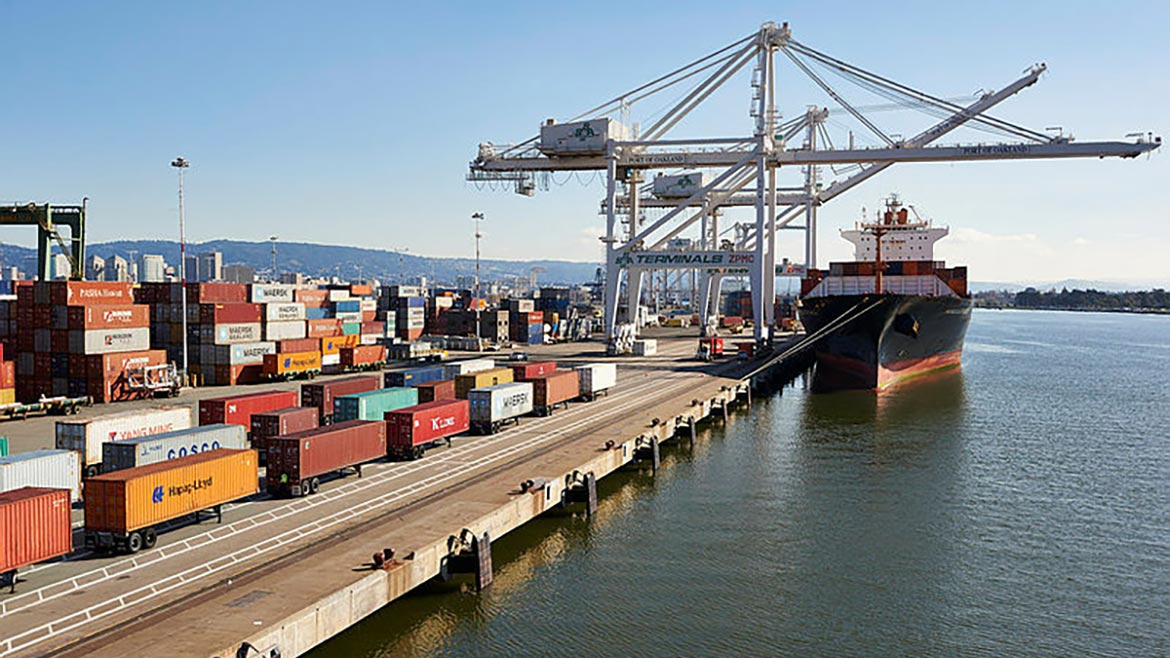Jan 1, 2022
Posted by Scott Halley, Director of Strategic Technology
The trucking industry is entering Phase 2 of the U.S. EPA's new greenhouse gas emissions and fuel efficiency standards, pushing OEM's to meet increasingly stringent targets.
Here's How The Right Lubricant Specification Can Help
As of 2021, the North American trucking industry has entered a new era: Phase 2 of the U.S. Environmental Protection Agency (EPA) and the National Highway Traffic Safety Administration's (NHTSA's) Greenhouse Gas Emissions and Fuel Efficiency Standards for Medium-and Heavy-duty Engines and Vehicles became effective for model-year 2021 vehicles.
Phase 2 requires significant gains in fuel economy and emissions reductions from OEMs over the next six years. By 2027, the EPA expects to lower fuel consumption and carbon dioxide emissions by about 25% for heavy-duty trucks - a stringent target that regulators expect to make a significant impact on the environment. This is a historic change. Prior to Phase 2, heavy-duty trucks have never been subjected to fuel economy regulations and getting to this point involved significant industry activity. And while engines themselves have been subject to emissions requirements in the past, Phase 2 applies to the entire vehicle - performance in North America is calculated using the Greenhouse Gas Emissions Model (GEM) to gauge holistic fuel consumption.
It is also a development reflective of a global shift toward emissions reductions and holistic sustainability. European emissions standards have staged a progressive introduction of increasingly stringent emissions targets, with the final phase (Euro 7) expected to be announced this year before coming into effect in 2025. China 6a additionally came into effect this year, the country's first phase of a new national standard targeting emissions from both passenger and commercial vehicles - when China 6b comes into effect by 2023, it will be the most stringent emissions requirement in the world. Bharat Stage 6 was also implemented in India in 2020, a standard similar to China 6.
What are the implications for heavy-duty trucking as OEMs pursue these goals? And how can low-viscosity lubricant formulations help OEMs deliver on these significant expectations? We'll explore the answers to those questions below:
How Lubricant Technology Enables Greater Efficiency
Phase 2 did not come out of the blue - OEMs and the lubricants industry have been anticipating its impact for the past several years. To that end, the American Petroleum Institute (API) developed its most recent heavy-duty engine oil service category with some of these in mind, and it is part of why the FA-4 category was introduced alongside the backwards compatible CK-4 upgrade. CK-4 lubricants are an all-purpose upgrade from the previous generation of CJ-4 lubricants and are suitable for all heavy-duty engines. They provide enhanced protection against oil oxidation, viscosity loss due to shear, and oil aeration as well as protection against catalyst poisoning, particulate filter blocking, engine wear, piston deposits, and soot-related viscosity increases. Meanwhile, FA-4 lubricants provide all of these same benefits in addition to being formulated specifically to deliver higher levels of fuel efficiency, and to be compatible with newer, more efficient engine hardware. FA-4 lubricants are generally suitable for use in heavy-duty engines model-year 2010 and newer.
To deliver enhanced fuel efficiency, FA-4 lubricants are formulated at a lower high temperature high shear (HTHS) viscosity range (between 2.9 and 3.2 centipoise) than their CK-4 counterparts (3.5 centipoise or higher). A lower HTHS viscosity gives FA-4 lubricants enhanced shear stability performance under the hotter temperatures and higher pressures of newer diesel engine hardware, all while improving fuel consumption and thereby lowering emissions.
FA-4 lubricants are typically formulated to deliver additional performance at a lower HTHS, while completing the same testing requirements of CK-4 lubricants. This allows FA-4 to deliver a fuel efficiency advantage over CK-4, while providing the same level of engine durability and protection.
For OEMs who have not yet already done so, it is worth carefully considering the benefits of specifying FA-4 lubricants for use in new-model engines. Achieving the fuel economy targets demanded by Phase 2 will require changes to every element of vehicle design - and the benefits of FA-4 formulations are not insignificant. A joint report from North American Council for Freight Efficiency and Carbon War room shows that converting to a fuel-efficient FA-4 variant vs. a CK-4 15W-40 can lead to total fuel economy savings between 0.7% to 2.2%.
Low-viscosity lubricants, including FA-4 and even lower HTHS viscosity formulations are just over the horizon, and also complementary to continuous innovations in engine design. For example, engine combustion is a key area to improve efficiency - to those ends, temperatures around the pistons have become hotter and hotter, requiring enhanced deposit control performance from engine lubricants. Delivering a high rate of lubricant flow to the pistons allows for more effective control of heat levels and deposits, helping the engine achieve the optimum levels of efficiency. FA-4 lubricants can inherently deliver those high rates of flow versus higher HTHS viscosity formulations.
Beyond Regulations
While regulatory measures are the largest drivers in emissions reductions, they are not the only ones. Greater sustainability and efficiency have evolved in recent years from something of a niche interest to a significant market driver - and specification of FA-4 lubricants may be a competitive advantage for OEMs.
For example, the heavy-duty trucking industry today is looking more closely at how to continuously improve their Total Cost of Ownership (TCO) and at how to positively benefit from their profit margins. The increasingly widespread use of telematics has offered fleet owners and operators much deeper insight into their operations, and they're looking for ways to become more efficient.
With this in mind, it is reasonable to expect fleet owners will seek new models that grant higher efficiency as their older trucks are inevitably phased out of service. Models that can be filled with FA-4 lubricants do just that. Consider that fuel represents about 24% of the average North American fleet's per-mile costs, according to the American Transportation Research Institute. If FA-4 can give a fleet 2% better fuel economy versus trucks that only accept CK-4, this becomes a powerful way for the fleet owner to improve their profitability.
Finally, the more widespread acceptance and growing market share of low-viscosity lubricants are inevitable as pressure increase - from all angles - to lower emissions and improve fuel economy. OEMs who take advantage of the technology today and develop the technological expertise to apply to their evolving engine designs, may be better positioned as our journey into a fuel-efficient, low-emissions future accelerates.









